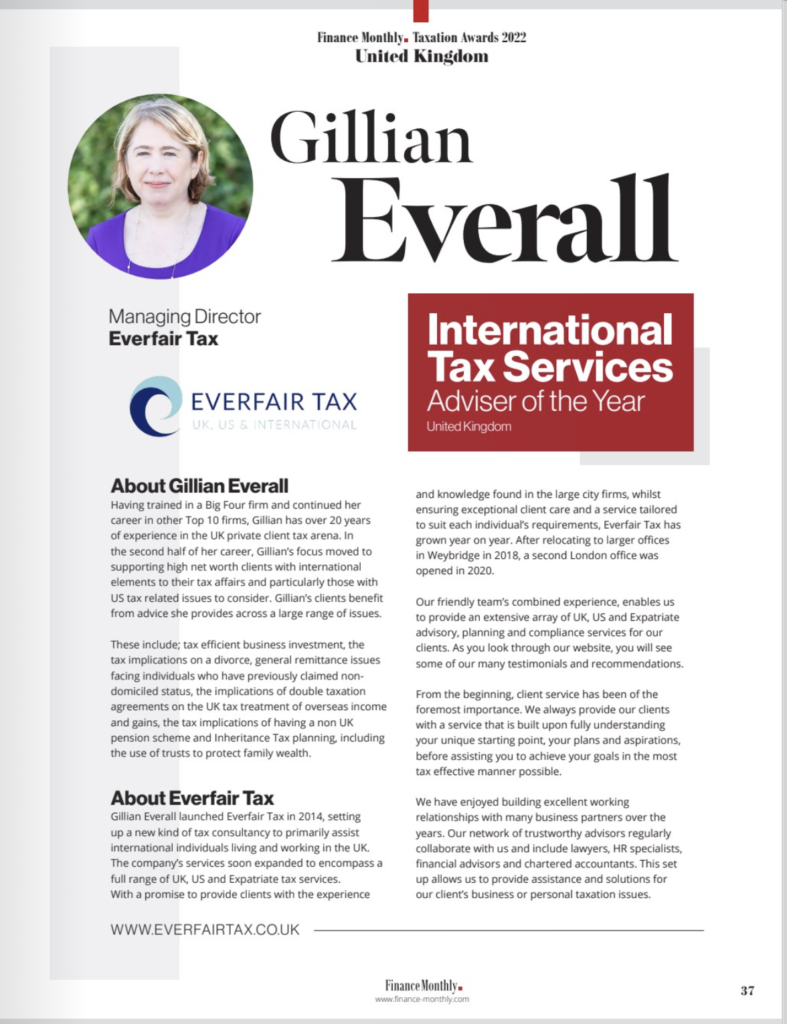If a taxpayer claims foreign tax credits on the ‘paid’ basis in the US, it may be necessary to accelerate UK/Foreign tax payments into the same calendar year as the income is reported. This will ensure that the income is aligned with the foreign tax credit in the same calendar year to avoid a situation whereby income and foreign tax credits are reportable in different tax years and tax is paid twice before a delay in reclaiming the US tax, affecting cashflow. In a worst case scenario the gap between income reporting and tax payment reporting exceeds one calendar year, which means no carry back is available (limited to one calendar year) and a genuine double taxation occurs.

Typically Prep payments of non US tax apply to the following:
- Arising basis (worldwide taxation) taxpayers
- Partners
- Self employed
- Taxpayers with large one off transactions within a tax year, without any withholding at source. (i.e. capital gain or carried interest income)
Under the US/UK double tax treaty generally the country of residence will have the primary taxing rights on income/capital gains (for US citizens), with a foreign tax credit available in the other jurisdiction (the US), however, this does not apply for US dividends, US real estate and potentially for pension payments in certain circumstances.
If in doubt, please reach out, as we can confirm if any year end planning is required and check your current situation versus available foreign tax credits.










